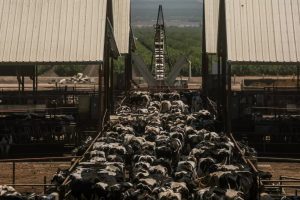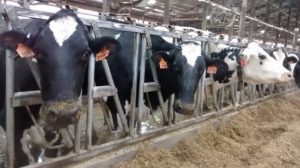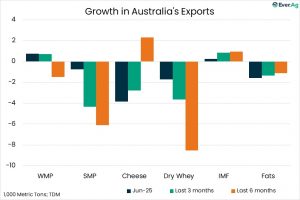
Gillibrand says the system is failing to meet the needs of small family farms.
In the letter to the GAO, the Senators and House representatives say data from the USDA’s Agricultural Statistics Service shows there has been a nearly 60 percent loss of licensed dairy operations since 2003, occurring primarily in regions with small and mid-sized dairy operations.
New York showed a decline of 18 percent, a situation that the Democrat calls unacceptable.
“Dairy farmers are a critical part of New York state’s economy and they shouldn’t be struggling to make ends meet simply because we are still using milk pricing systems established in the 1930s. It’s time for the federal dairy pricing system to be reevaluated. And we need to make sure farmers have a voice in this process. And they need to be able to price their products in a way that meets their needs. Last year, I introduced a bill to do just that. My Dairy Pricing Opportunity Act would direct the USDA to start the process of holding Federal Milk Market Order hearings within six months. These hearings would give farmers the opportunity to have a voice in how their products are priced and help the USDA become more informed on how the current formula affects them.”
Senator Gillibrand is following up that legislation by asking the GAO to conduct a review of the Federal Milk Market Order program.
“This review would help make sure the federal milk pricing system accounts for the interests of smaller farms and doesn’t cause undue burdens and costs for state dairy, regulatory and support programs. We can’t afford to lose any more small farms and that means making sure the federal pricing formula compensates dairy farmers fairly.”
New York Farm Bureau spokesperson Steve Ammerman says that the milk pricing formula set by the Federal Milk Marketing Order system is complex and confusing. He says what Senator Gillibrand and groups like the Farm Bureau are trying to do is ensure that dairy farmers get a fair price for the milk they produce.
“There have been great fluctuations in prices in the past years. Things have rebounded this year for dairy farmers but at the same time inflation costs are up and are eating a lot of that income. So what we need to do is take a hard look at this system that hasn’t been revised and reformed in about 30 years. And there is so much confusion and it’s an incredibly complicated process that a lot of dairy farmers frankly don’t even understand how they’re paid for their milk. Their milk check arrives about six weeks after the milk leaves the farm based on this complicated formula.”
The representatives want the GAO to address six questions, including whether the system “can be administered under its current statutory authorization to maintain operation of smaller-scale farms.” Ammerman says the answers may help farmers.
“A priority of Farm Bureau is to improve the federal Milk Marketing Order to adopt more uniform milk pricing rules all across the country, to make it a more efficient process and hopefully make it a more fair process for our farmers. We have lost well over a thousand dairy farms in New York state alone in the past ten years. We’ve gone through several years of incredibly low milk prices where farmers were getting paid what they were decades ago yet their costs are much, much higher today. So we really have to take a hard look at this system and figure out what’s going to be most workable and what’s going to be most beneficial for our farmers.”
The letter requesting a review of the federal milk pricing system was signed by Democratic Senators Gillibrand of New York, Jeanne Shaheen of New Hampshire and Patrick Leahy of Vermont, Maine Republican Susan Collins and Independent Angus King and Kansas Republican Congressman Roger Marshall.

























